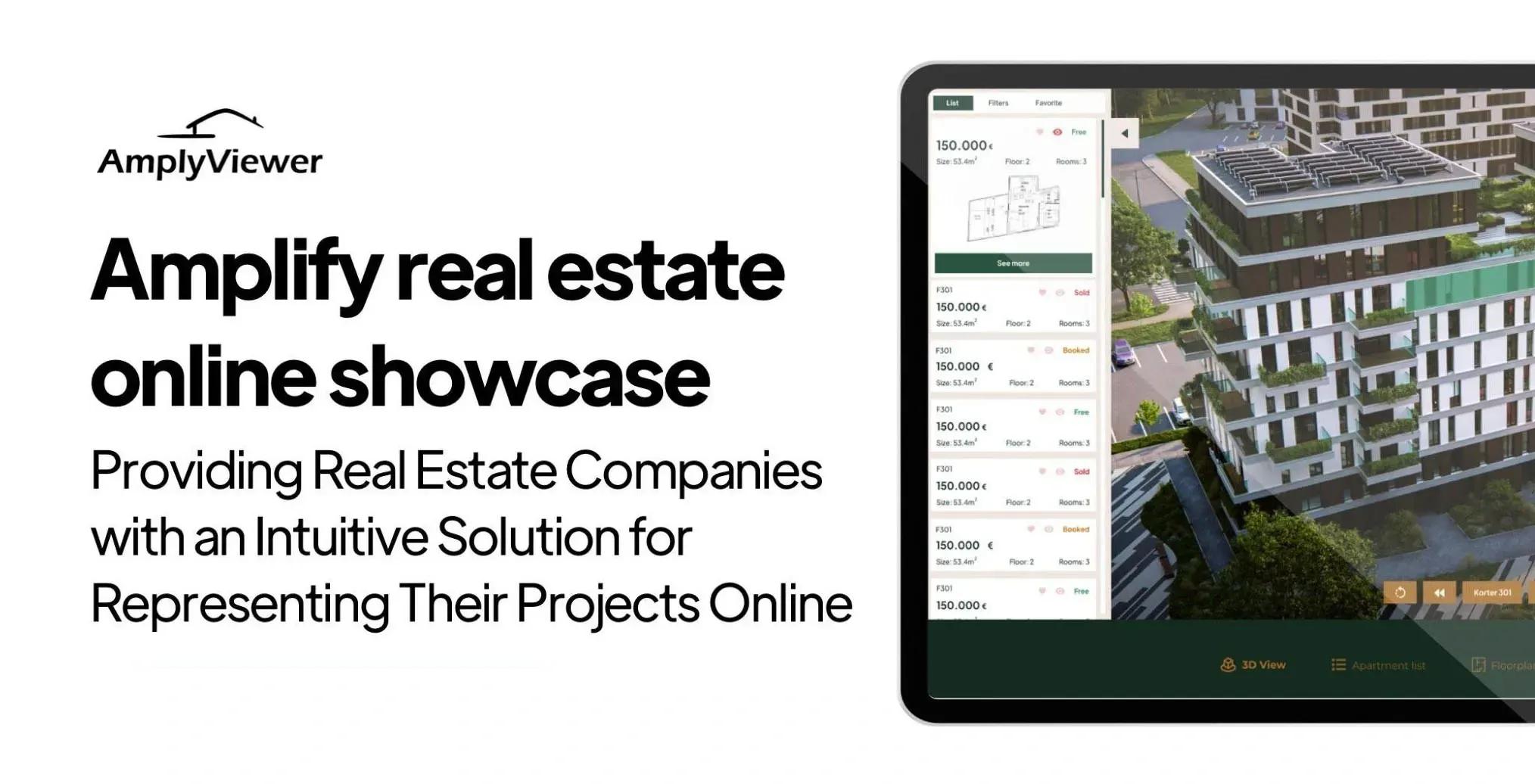Real Estate Digital Marketing: 7 ROI-Driven Tactics for 2025

Digital presence shapes real estate success, with over 96% of buyers starting their property search online (Source: Resimpli). For real estate professionals, this digital-first approach demands strategic marketing investments that deliver measurable returns. Ready to transform your digital marketing strategy into a powerful ROI generator?
These seven data-backed tactics will help you maximize your marketing investment while staying ahead of the competition in 2025.
Whether you're looking to enhance your real estate marketing automation or create more engaging property showcases, these strategies combine proven techniques with emerging technologies to drive remarkable results.
Each tactic comes with practical implementation steps, ROI tracking metrics, and real-world examples to help you create a digital marketing strategy that generates measurable results.
Ready to dive into these game-changing strategies?
Here's your roadmap to digital marketing success in 2025.
The Digital Transformation of Real Estate Marketing
Real estate marketing budgets reflect a decisive shift toward digital channels, with digital marketing now accounting for 54.2% of real estate agents' total marketing budget (Source: Resimpli). This investment shift isn't just following a trend—it's responding to concrete data about buyer behavior and ROI potential.
Smart digital marketing transforms property listings into immersive experiences through 3D property visualization and virtual tours. These digital tools don't just showcase properties; they qualify leads and streamline the buying process, delivering measurable returns on your marketing investment.
Key Digital Marketing Impact Areas
- Lead Generation: Digital channels provide trackable, qualified leads through targeted campaigns
- Buyer Engagement: Interactive content keeps potential buyers engaged longer
- Market Reach: Digital platforms expand your reach while maintaining cost efficiency
- Conversion Tracking: Digital tools offer precise ROI measurement capabilities
The shift toward digital marketing brings unprecedented opportunities for strategic marketing development. By focusing on ROI-driven tactics, real estate professionals can maximize their digital marketing investment while building a stronger online presence that converts browsers into buyers.
Understanding this digital transformation sets the foundation for implementing our seven ROI-driven tactics. Each strategy builds on this digital framework, leveraging technology and data to create marketing campaigns that deliver measurable results. Let's explore how SEO optimization creates the cornerstone of your digital marketing success.
1. SEO Optimization: Building a Strong Digital Foundation
SEO drives 53% of website traffic for real estate agents (Source: Resimpli). This powerful traffic source transforms your website into a lead-generating machine when properly optimized. Here's how to build an SEO strategy that captures qualified leads while maximizing your return on investment.
Local SEO Strategies for Real Estate
Local search optimization connects you with buyers in your target market. Start by optimizing your custom real estate website for location-specific keywords and phrases.
- Google Business Profile Optimization: Complete all fields with accurate, detailed information
- Local Keywords: Target phrases like "homes for sale in [city]" and "[neighborhood] real estate agent"
- Local Content Creation: Develop neighborhood guides and market reports
- Local Citations: Maintain consistent NAP (Name, Address, Phone) across all platforms
Content Optimization Techniques
Quality content drives organic traffic and establishes your expertise. Focus on creating valuable resources that answer specific buyer questions and showcase your market knowledge.
Property Listings
- SEO Benefits: Unique descriptions, keyword optimization
- ROI Metrics: Views, inquiries, conversion rate
Market Reports
- SEO Benefits: Data-rich content, local relevance
- ROI Metrics: Time on page, lead captures
Buyer Guides
- SEO Benefits: Long-form content, featured snippets
- ROI Metrics: Page authority, backlinks
Technical SEO Requirements
Technical optimization ensures search engines can effectively crawl and index your content while providing an excellent user experience.
Key technical factors include:
- Mobile-first design optimization
- Page speed improvement
- Schema markup implementation
- XML sitemap maintenance
- Secure HTTPS protocol
Measuring SEO Success
Track these key performance indicators (KPIs) to measure your SEO ROI:
- Organic Traffic Growth: Monitor monthly increases in organic visitors
- Keyword Rankings: Track position improvements for target keywords
- Conversion Rate: Measure leads generated from organic traffic
- Page Performance: Analyze user behavior metrics
Effective SEO creates a foundation for sustainable online visibility and lead generation. By implementing these optimization strategies, you'll build a robust digital presence that continues delivering results long after initial implementation. This organic foundation perfectly complements our next ROI-driven tactic: video marketing.

2. Video Marketing: Engaging Property Showcases
Property listings with video content generate 403% more inquiries compared to those without videos (Source: Resimpli). This striking statistic demonstrates why video marketing stands as one of the most powerful tools in your digital arsenal. Let's explore how to leverage real estate video marketing for maximum ROI.
Types of Effective Real Estate Videos
Different video formats serve various stages of the buyer journey, each contributing to your overall marketing success.
Property Tours
- Purpose: Showcase listings in detail
- Key Elements: Room-by-room walkthrough, highlight features
Neighborhood Tours
- Purpose: Highlight local amenities
- Key Elements: Local attractions, lifestyle elements
Client Testimonials
- Purpose: Build trust and credibility
- Key Elements: Authentic experiences, success stories
Platform-Specific Video Strategies
Each platform requires a tailored approach to maximize engagement and reach:
- YouTube: Longer, detailed property tours and market updates
- Instagram Reels: Quick property highlights and behind-the-scenes content
- Facebook: Mix of live streams and produced content
- TikTok: Trendy, engaging property reveals and tips
Video Production Best Practices
Create professional-quality videos that showcase properties in their best light:
- Use stabilized camera equipment for smooth footage
- Ensure proper lighting throughout the property
- Include aerial footage for larger properties
- Add professional graphics and branding
- Optimize audio quality for narration
Video Marketing ROI Metrics
Track these key metrics to measure your video marketing success:
- View Duration: Average time viewers spend watching
- Engagement Rate: Likes, comments, and shares
- Click-Through Rate: Viewers who take action
- Lead Generation: Inquiries from video content
- Conversion Rate: Videos that result in showings or sales
Combine your video strategy with professional drone footage and high-quality visuals to create compelling content that captures attention and drives inquiries. This visual-first approach naturally leads us to our next tactic: leveraging high-impact visual content across all your marketing channels.
3. High-Impact Visual Content
Properties showcased with professional photography sell 32% faster than those without (Source: Resimpli). High-quality visual content isn't just about pretty pictures—it's about creating compelling property narratives that drive faster sales and higher returns.
Professional Photography Best Practices
Excellence in real estate photography requires more than just good equipment. Follow these professional photography guidelines to capture attention-grabbing images:
- Lighting Optimization: Balance natural and artificial light
- Composition Rules: Frame shots to maximize space perception
- Detail Highlights: Showcase unique property features
- Post-Processing: Maintain realism while enhancing appeal
Virtual Tours and 3D Experiences
Modern buyers expect immersive digital experiences. Implement these 3D visualization techniques to meet their expectations:
3D Virtual Tours
- Benefits: 24/7 property access, reduced in-person showings
- ROI Indicators: Time saved, qualified leads
Virtual Staging
- Benefits: Cost-effective presentation, multiple style options
- ROI Indicators: Faster sales, reduced staging costs
Interactive Floor Plans
- Benefits: Better space visualization, engaged buyers
- ROI Indicators: Increased inquiry quality
Visual Content Distribution Strategy
Maximize your visual content's impact across multiple channels:
- Property Listings: Lead with highest-impact images
- Social Media: Platform-optimized visual content
- Email Marketing: Curated visual storytelling
- Website Galleries: Organized, easy-to-navigate portfolios
Visual Content ROI Analysis
Track these metrics to measure your visual content's performance:
- Engagement Metrics: Time spent viewing galleries
- Lead Quality: Inquiry specificity based on visuals
- Conversion Rates: Virtual tour to showing ratio
- Time to Sale: Impact on property sale velocity
Enhance your visual strategy with professional graphic design elements to create a cohesive brand presence across all marketing materials. This visual foundation sets the stage for our next tactic: strategic social media marketing, where compelling visuals drive engagement and lead generation.

💻 Let us help you create a stunning online showcase for your projects that works seamlessly across all devices. Ready to amplify your real estate business? 👉 Explore AmplyViewer now
4. Strategic Social Media Marketing
Social media has become a cornerstone of real estate marketing, with 63% of agents using these platforms to advertise listings (Source: Taylor Scher SEO). Success on social media isn't about posting randomly—it's about implementing a strategic approach that generates measurable returns.
Platform Selection and Strategy
Each social media platform offers unique advantages for real estate marketing:
- Best Content Types: Property highlights, Stories, Reels
- Target Audience: Millennial buyers, visual browsers
- Best Content Types: Virtual tours, market updates, community content
- Target Audience: Diverse age groups, local community
- Best Content Types: Market insights, professional updates
- Target Audience: Investors, business networking
Content Calendar Development
Create a balanced content mix that engages followers while driving business results:
- 40% Property Showcases: Listings, virtual tours, property highlights
- 30% Market Insights: Trends, statistics, neighborhood guides
- 20% Educational Content: Buying tips, market updates, financing information
- 10% Behind-the-Scenes: Team updates, personal branding, success stories
Engagement Optimization Techniques
Boost your social media ROI with these proven engagement strategies:
- Timing: Post during peak engagement hours for your audience
- Hashtag Strategy: Use location-specific and industry-relevant tags
- Interactive Content: Polls, questions, and calls-to-action
- Community Building: Respond to comments and engage with followers
Social Media Advertising
Maximize your reach with targeted paid campaigns:
- Audience Targeting: Define demographics, interests, and behaviors
- Ad Types: Carousel ads for multiple properties, lead generation forms
- Budget Allocation: Test and optimize spending across platforms
- Retargeting: Re-engage website visitors and past leads
Performance Tracking
Monitor these key metrics to measure social media marketing success:
- Engagement Rate: Likes, comments, shares per post
- Lead Generation: Inquiries from social platforms
- Traffic: Social media referrals to your website
- Conversion Rate: Social leads to showings/sales
- Ad Performance: Cost per lead, return on ad spend
Enhance your social media strategy with eye-catching digital ads and consistent branding. This social foundation perfectly complements our next tactic: leveraging emerging technologies to create innovative property experiences.
5. Emerging Technology Integration
Technology adoption is reshaping real estate marketing, with 54% of real estate professionals reporting that AI-powered tools help identify high-quality leads (Source: Luminare IA). Smart technology integration isn't about chasing trends—it's about leveraging tools that deliver measurable returns.
Virtual and Augmented Reality Applications
Transform property viewings with immersive technologies that save time and qualify leads:
Virtual Reality (VR)
- Applications: 360° property tours, remote viewings
- ROI Benefits: Reduced showing time, qualified leads
Augmented Reality (AR)
- Applications: Furniture placement, renovation visualization
- ROI Benefits: Enhanced buyer vision, faster decisions
Mixed Reality
- Applications: Interactive property features, measurements
- ROI Benefits: Improved buyer experience, detailed insights
AI-Powered Solutions
Leverage artificial intelligence to streamline operations and enhance marketing effectiveness:
- Chatbots: 24/7 lead qualification and response
- Predictive Analytics: Market trend analysis and pricing optimization
- Lead Scoring: Automated prospect qualification
- Content Personalization: Tailored property recommendations
Implementation Strategy
Follow these steps to integrate new technologies effectively:
- Assessment: Evaluate current tech stack and needs
- Selection: Choose tools that align with business goals
- Training: Ensure team proficiency with new tools
- Integration: Connect with existing systems
- Measurement: Track performance and ROI
Cost-Benefit Analysis
Consider these factors when investing in new technology:
- Initial Investment: Setup costs, training, implementation
- Operating Costs: Monthly subscriptions, maintenance
- Time Savings: Automated tasks, reduced manual work
- Lead Quality: Improved qualification and conversion rates
- Competitive Advantage: Market differentiation value
Technology ROI Metrics
Track these key performance indicators:
- Time Efficiency: Hours saved through automation
- Lead Quality: Conversion rates from tech-enabled leads
- User Engagement: Interaction with virtual tools
- Cost per Lead: Technology impact on acquisition costs
- Client Satisfaction: Feedback on tech-enabled services
Enhance your technology stack with interactive property visualization tools to create engaging buyer experiences. This tech-forward approach naturally complements our next strategy: building strategic partnerships to expand your market reach.
6. Building Strategic Partnerships
Strategic partnerships are becoming increasingly vital as real estate marketing shifts toward targeted micro-market campaigns (Source: Resimpli). Smart collaborations expand your reach while sharing resources and expertise, creating win-win scenarios that boost ROI for all parties involved.
Identifying Valuable Partners
Focus on partnerships that complement your real estate marketing strategy:
Home Service Providers
- Value Proposition: Referral network, added value services
- ROI Potential: Enhanced client experience, shared leads
Local Businesses
- Value Proposition: Community presence, cross-promotion
- ROI Potential: Increased local visibility, referrals
Digital Marketing Agencies
- Value Proposition: Technical expertise, content creation
- ROI Potential: Professional online presence, lead generation
Collaboration Frameworks
Establish clear partnership structures for maximum effectiveness:
- Co-Marketing Initiatives:
- Joint content creation
- Shared email campaigns
- Cross-platform promotion
- Combined events
- Resource Sharing:
- Technology platforms
- Market research
- Professional networks
- Marketing materials
Partnership Implementation Strategy
Follow these steps to build successful partnerships:
- Partner Evaluation: Assess alignment with your brand values
- Agreement Structure: Define clear terms and expectations
- Communication Channels: Establish regular check-ins
- Resource Allocation: Determine shared investments
- Success Metrics: Define mutual KPIs
Maximizing Partnership ROI
Optimize your partnerships with these strategies:
- Regular Performance Reviews: Track shared goals and outcomes
- Content Collaboration: Create valuable shared resources
- Lead Sharing Protocols: Establish clear referral systems
- Brand Alignment: Maintain consistent messaging
Partnership Success Metrics
Monitor these key indicators to measure partnership effectiveness:
- Lead Generation: Number and quality of shared leads
- Cost Savings: Reduced marketing expenses through sharing
- Market Reach: Extended audience engagement
- Revenue Growth: Partnership-attributed sales
- Brand Value: Enhanced market positioning
Strengthen your partnerships with compelling marketing messages that resonate with shared audiences. These strategic alliances set the stage for our final tactic: building and maintaining strong client relationships through digital channels.
7. Client Relationship Management
Digital relationship management proves its worth through concrete results, with email marketing converting 40% higher than social media in real estate (Source: Taylor Scher SEO). Smart relationship management combines personal touch with digital efficiency to create lasting connections that generate ongoing referrals and repeat business.
Digital Communication Strategies
Create a multi-channel approach to maintain meaningful client connections:
Email Marketing
- Purpose: Nurture leads, market updates
- Engagement Strategy: Personalized content, automated workflows
Text Messages
- Purpose: Immediate updates, scheduling
- Engagement Strategy: Time-sensitive info, confirmations
Client Portal
- Purpose: Document sharing, progress tracking
- Engagement Strategy: 24/7 access, transparent communication
Automation Tools and Implementation
Leverage technology to enhance personal relationships through marketing automation:
- CRM Integration:
- Contact management and tracking
- Automated follow-up sequences
- Lead scoring and prioritization
- Activity tracking and reminders
- Communication Automation:
- Birthday and anniversary greetings
- Property anniversary check-ins
- Market update newsletters
- Listing alerts and notifications
Content Personalization
Deliver relevant, valuable content to strengthen relationships:
- Market Updates: Neighborhood-specific trends and data
- Property Insights: Value appreciation reports
- Lifestyle Content: Home maintenance tips, local events
- Investment Opportunities: Targeted property recommendations
Digital Client Experience Enhancement
Create seamless interactions across all touchpoints:
- Online Scheduling: Easy appointment booking
- Virtual Tours: Remote property viewing options
- Digital Documentation: Secure document sharing
- Feedback Systems: Regular satisfaction surveys
Relationship ROI Metrics
Track these key performance indicators:
- Client Retention Rate: Repeat business percentage
- Referral Generation: New leads from existing clients
- Email Engagement: Open rates, click-through rates
- Response Time: Average time to client inquiry resolution
- Client Satisfaction: NPS scores and feedback metrics
Enhance your client relationships with a professional digital presence that reflects your commitment to service excellence. Strong client relationships form the foundation of sustainable business growth and consistent ROI.
Implementation Timeline and Budget Considerations
Digital marketing channels consistently deliver superior ROI compared to traditional advertising methods (Source: Luminare IA). Success comes from strategic implementation and smart budget allocation rather than trying to do everything at once.
Phased Implementation Strategy
Foundation (Months 1-2)
- Timeline: Essential setup
- Focus Areas: SEO basics, website optimization, social profiles
Growth (Months 3-4)
- Timeline: Content development
- Focus Areas: Visual content, video creation, email campaigns
Expansion (Months 5-6)
- Timeline: Advanced features
- Focus Areas: Virtual tours, automation, partnerships
Budget Allocation Framework
Prioritize your marketing investments based on potential returns:
- Essential Investments (50% of budget):
- Professional website development
- High-quality photography and video
- SEO optimization
- Core marketing automation tools
- Growth Initiatives (30% of budget):
- Social media advertising
- Content creation
- Email marketing campaigns
- Virtual tour technology
- Innovation Fund (20% of budget):
- Emerging technologies
- Partnership development
- Advanced automation tools
- Market expansion initiatives
Resource Optimization
Maximize returns through efficient resource allocation:
- Technology Stack: Choose integrated solutions that reduce overlap
- Team Training: Invest in skill development for new tools
- Content Repurposing: Create multi-channel assets
- Partnership Leverage: Share resources for mutual benefit
ROI Tracking Framework
Monitor these key metrics across all initiatives:
- Lead Generation Metrics:
- Cost per lead by channel
- Lead quality scores
- Conversion rates
- Time to conversion
- Financial Metrics:
- Return on marketing investment
- Customer acquisition cost
- Lifetime customer value
- Revenue attribution by channel
Enhance your implementation strategy with proven marketing development techniques that align with your business goals. A well-planned implementation ensures sustainable growth and measurable returns on your marketing investments.

Frequently Asked Questions
What digital marketing tactics provide the fastest ROI in real estate?
High-impact visual content and virtual tours consistently deliver quick returns, with properties featuring 3D tours receiving 87% more views than those without (Source: Resimpli). For immediate impact, focus on professional photography, virtual tours, and targeted social media advertising. These visual-first strategies capture attention and generate qualified leads more quickly than traditional marketing methods.
How much should I budget for real estate digital marketing?
Start by allocating 50% of your total marketing budget to digital channels, focusing on essential elements first:
- Professional website development and maintenance
- High-quality visual content creation
- Social media advertising
- Email marketing automation
Scale your investment based on ROI metrics and market response. Learn more about cost-effective strategies in our guide to luxury real estate marketing.
Which social media platforms are most effective for real estate marketing?
The most effective platforms depend on your target audience and property type. Generally:
- Instagram: Ideal for visual property showcases and brand building
- Facebook: Excellent for community engagement and targeted advertising
- LinkedIn: Perfect for commercial real estate and investor networking
- YouTube: Powerful for property tours and educational content
Explore platform-specific strategies in our real estate YouTube marketing guide.
How can I measure the ROI of my digital marketing efforts?
Track these essential metrics to measure digital marketing ROI:
- Website traffic and conversion rates
- Lead generation by channel
- Cost per lead and acquisition
- Engagement rates on social media
- Email marketing performance
Use analytics tools and CRM systems to monitor these metrics consistently and adjust strategies accordingly.
What emerging technologies should I invest in first?
Prioritize technologies that enhance the buyer experience and streamline operations:
- Virtual tour platforms
- CRM systems with automation capabilities
- Professional photography and video equipment
- Social media management tools
Learn more about technology integration in our guide to 3D property visualization.
How can I create engaging content consistently?
Develop a content strategy that combines:
- Property showcases and virtual tours
- Market updates and trends
- Educational content for buyers and sellers
- Behind-the-scenes glimpses of your work
Use content calendars and automation tools to maintain consistency while focusing on quality. Explore more content ideas in our marketing messages guide.
Conclusion: Maximizing Your Digital Marketing ROI in 2025
Digital marketing continues to prove its worth in real estate, with email marketing alone delivering ROI of up to 4,200% (Source: Resimpli). By implementing these seven ROI-driven tactics strategically, you're positioning your real estate business for sustainable growth and competitive advantage in 2025 and beyond.
Key Implementation Steps:
- Start with a strong digital foundation through SEO optimization
- Create engaging visual and video content
- Build a strategic social media presence
- Leverage emerging technologies wisely
- Develop valuable partnerships
- Nurture client relationships through digital channels
- Monitor and optimize based on ROI metrics
Success in real estate digital marketing isn't about implementing every available tactic—it's about choosing the right strategies that align with your business goals and deliver measurable returns. Focus on quality over quantity, and always track your results to optimize performance.
Your Next Steps
Ready to transform your real estate marketing strategy? Start by:
- Auditing your current digital presence
- Identifying your highest-priority tactics
- Creating an implementation timeline
- Setting up tracking systems for ROI measurement
Need help implementing these strategies? Explore our marketing strategy services or check out our AmplyViewer solution for creating engaging property showcases that convert.
Remember, successful digital marketing in real estate is a journey, not a destination. Stay informed about emerging trends, continuously measure your results, and adjust your strategies based on performance data. Your commitment to ROI-driven marketing today will build the foundation for your success tomorrow.


